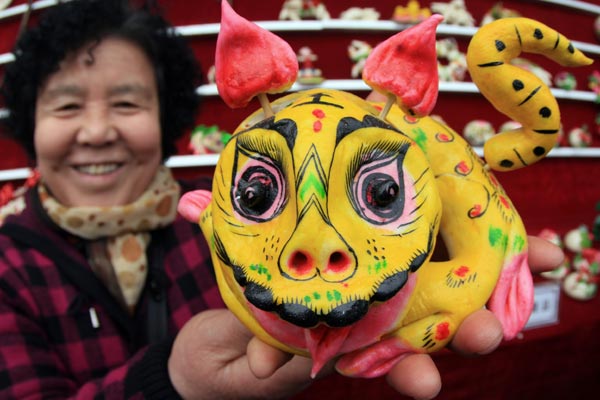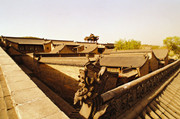Floury flower buns
By Lan Tian ( China Daily )
Updated: 2011-04-05
|
|
In the fertile bread basket that is Shanxi province, buns made from wheat flour are offered at the tombs of ancestors during the Qingming Festival, a time when those long gone are remembered. Lan Tian recalls the customs of home.
Symbolic foods play a large part in any traditional Chinese festival, and when the Tomb-Sweeping Festival or Qingming comes around, it is a flower-shaped steamed bun that is a must-have offering in North China's Shanxi province. Flour-based food like the huamo or literally, "flower buns", are dinner table necessities in this province right on the rich loess plateau, the highland plains with its life-giving yellow earth. Here, flour is made from corn, sorghum, buckwheat, naked wheat or soya bean ?all cereal and food crops that are abundant here.
As the saying goes, "China has the world's best flour-made food; and Shanxi is the home of China's flour-made food." Shanxi boasts more than a thousand kinds of flour-based food, and huamo is only one of the very many. The buns or mo, is simply a fancier hand-molded form of the familiar mantou.
In rural Shanxi, in the central and southern parts in particular, every household will be making huamo for the Tomb Sweeping Day.
Some of them can be very large.
Folk culture enthusiasts in Xiangning, a county on the banks of the Yellow River, and in Linfen city, five pagoda-shaped huamo were made from almost 5 tons of wheat flour and 2 tons of water. More than 20 people spent about 15 days hand-shaping the buns, the biggest of which measured almost 3 meters tall.
These huge buns are aiming for a new Guinness World Record, said Yan Yuning, vice-chairman of the county-based Zhonghe Cultural Research Institute, the organizer of the event.
"Steaming huamo during festivals is a tradition passed down for thousands of years. My grandmother taught the skill to my mother, who in turn taught it to my wife," he said.
Like the making of the ubiquitous mantou, huamo is usually made from flour, water and leavening agents. But unlike the plain mantou, huamo dough is sculpted into flowers, animals or little dolls and colored with vegetable juices before being steamed.
Homemade huamo ranges in size from 5 cm to more than 50 cm, and they may weigh more than 10 kg each and take several days to make, usually by the home chefs in the family, the women.
Huamo prepared for the tomb sweeping rituals during Qingming is often made into shapes resembling fish, child-like figures, or the Qing Dynasty (1644-1911) official's hat. They will be placed before the family tombs as offerings, accompanied by prayers for blessings and a rich and happy life, 62-year-old Yan said.
As a native of Shanxi, I remember well the time-consuming process of preparing huamo at home, even though I did not grow up in the rural area.
Each winter when I returned home for the Spring Festival, my grandmother would spend several nights making the huamo by hand. One image I will never be able to erase from my mind is the silhouette of my slightly hunched grandmother moving around the large mud stove.
When she lifted the lid off the big steamer and removed the tray, the steaming huamo decorated with jujubes and beans would leap into sight, and the special sweet fragrance of grain would fill my nostrils.
"In southern Shanxi, different shapes of huamo symbolize different blessings and are eaten by different people," said Yan. For example, boys eat tiger-shaped huamo, and girls eat frog- or flower-shaped huamo.
After the tomb sweeping is done, huamo offered at the graves will be brought home and eaten only by the male members of the family. On the day after the actual Tomb Sweeping Day, fish-shaped huamo are presented to the daughters of the family who had just married in the last year, he said.
Huamo appeal to children, especially. These cleverly kneaded, colorful buns are more like pretty ornaments and toys.
My 78-year-old grandmother still remembers when she was a child, her mother would decorate the house with huamo shaped like swallows that were attached to the tips of jujube twigs. These were put beside the windows, and she would eat the swallow-shaped huamo after she got tired of playing with them.





